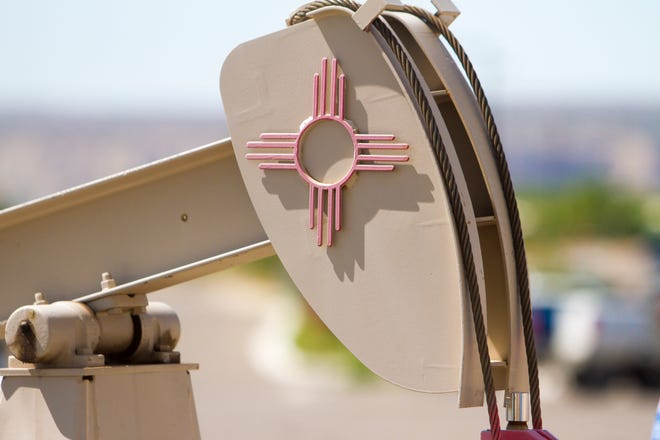Trump promises oil, gas industry assistance a day after WTI traded negative

AZTEC — The futures market for West Texas Intermediate oil fell into negative numbers on April 20, but has since rebounded into positive digits.
As of the morning of April 21, the price of a barrel of WTI crude that will be delivered in May had turned positive and was trading at $5 on April 21 as the May futures trading closed. WTI is the benchmark U.S. oil contract.
Daniel Fine, an oil and gas researcher with New Mexico Tech who also collaborates with Four Corners Economic Development, said there was no one to buy the May contracts for West Texas Intermediate because on April 20 there wasn’t a place to put the oil that would be delivered in May.
The WTI contracts are sold based on the anticipated production of oil. Each month those contracts must be settled with the delivery of crude oil to a storage site. But the delivery point for that oil, located in Cushing, Oklahoma, did not have the room to take the crude oil.
Fine described the price crash as a technical issue that impacted a small number of contracts and barrels of oil. He said it does not necessarily reflect the oil and gas industry as a whole. Instead, he said it reflects more on the structure of commodity trading, in particular future trading.
This was also the message President Donald Trump gave when asked about the oil crash during a press conference on April 20. Trump said the price crash was more about financial markets than oil.
“It’s largely a financial squeeze, and they did get squeezed,” Trump said.
High supply, low demand creates lack of storage
There are two driving factors behind the lack of storage: low demand and high supply.
The low demand is a direct result of restrictions put in place to curb the spread of coronavirus. While gasoline in Bernalillo is $1.19 per gallon, Fine said very few vehicles are filling up at the gas stations.
“Demand has been destroyed by the pandemic,” Fine said.

Fine said he anticipates the Permian Basin will reduce its production by 850,000 barrels, including a 650,000 barrel reduction in the New Mexico side. He said the Permian will likely never recover.
Reducing production hits state budget
Republican legislators have been asking the governor to call a special session for about a month following low oil prices. The reduced production and the low prices will have a big impact on the state budget, which was passed a little more than a month ago.
“That budget now is essentially a museum piece,” Fine said.
The boom in the Permian Basin began in 2010, but was interrupted by a price war in 2014 through 2016. After the price war ended, the boom resumed.
“All that period is over,” Fine said. “The boom period ends and where do we go from here.”
Trump says funds will be available to assist oil and gas industry
Fine said where the oil market goes from now depends on the virus and the federal government.
On April 21, Trump tweeted: “We will never let the great U.S. Oil & Gas Industry down. I have instructed the Secretary of Energy and the Secretary of the Treasury to formulate a plan which will make funds available so that these very important companies and jobs will be secured long into the future!”
Fine said the president should include the small, independent producers in whatever assistance the federal government provides to the oil and gas industry.
Natural gas prices may increase
Reducing oil production may have some positive impact on the San Juan Basin. Fine said the natural gas is a byproduct of oil production in the Permian Basin. Because the Permian Basin has been producing a surplus of natural gas, and there is no way to send all the natural gas to markets, the San Juan Basin natural gas prices have reached historic lows and oil producers in the Permian have vented or flared off natural gas.

Fine also proposed the federal government develop a price index for San Juan natural gas eliminating the discount of the San Juan gas caused by the production in the Permian and the lack of takeaway capacity. He said the Department of the Interior began that process more than a year ago, however it was never completed.
Pipelines to take the natural gas to the Gulf of Mexico will help increase the demand for the natural gas.
Fine anticipates the reduction in the oil production as well pipelines to the Gulf of Mexico will lead to the price of San Juan natural gas being higher a year from now.
He said the prices will stabilize and possibly move back toward the $2 per thousand cubic feet price.
Booms and busts are part of the New Mexico's extraction history
"Basically when I say the boom time is over, it's something we should look at in terms of the history of New Mexico," Fine said.
New Mexico has been producing oil and natural gas for 100 years, Fine highlighted. He said during that time there have been three or four major booms followed by bust periods.
“This is one more,” he said. "One more in the first 100 years."
Hannah Grover covers government for The Daily Times. She can be reached at 505-564-4652 or via email at hgrover@daily-times.com.
Support local journalism with a digital subscription: http://bit.ly/2I6TU0e